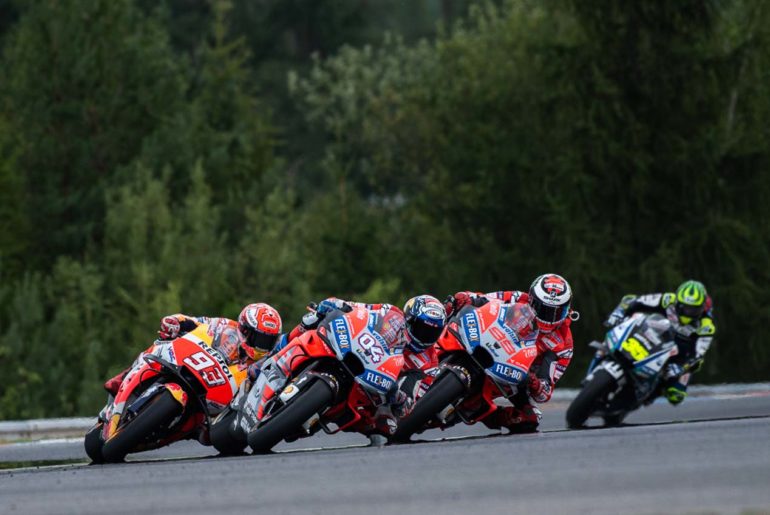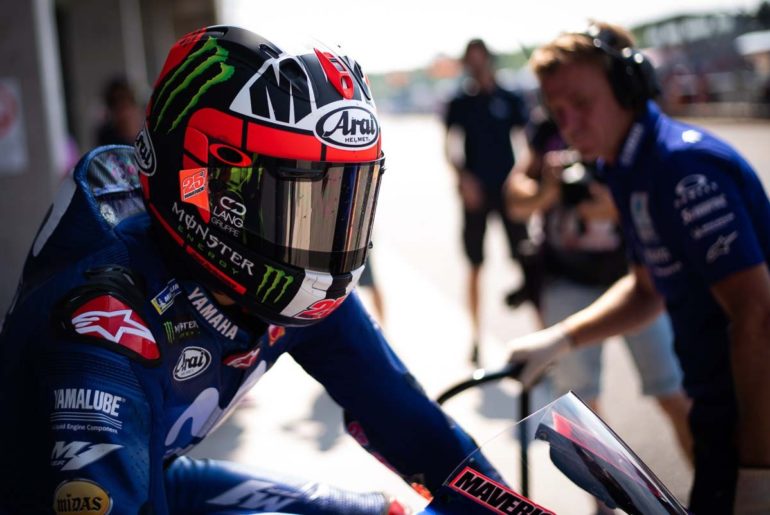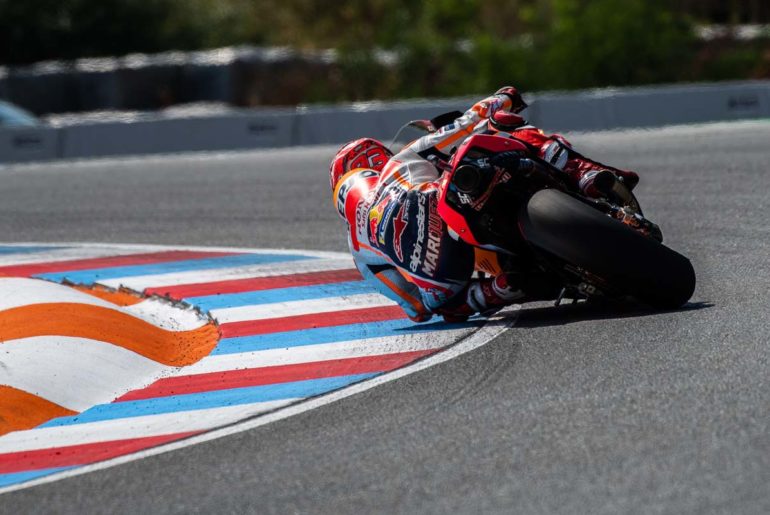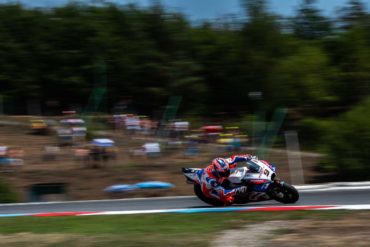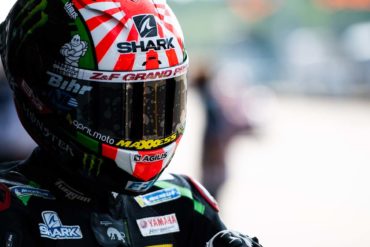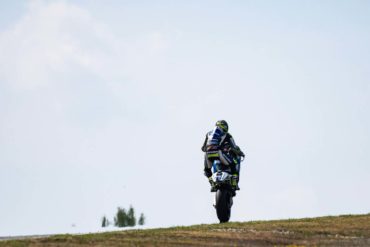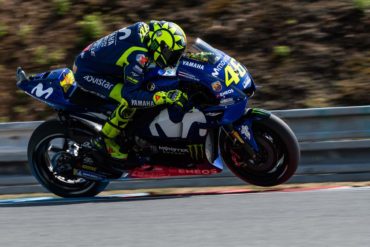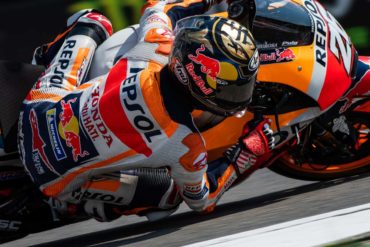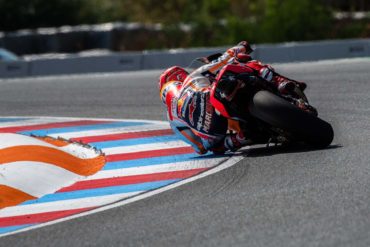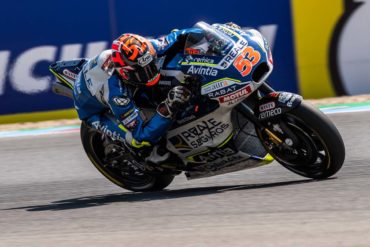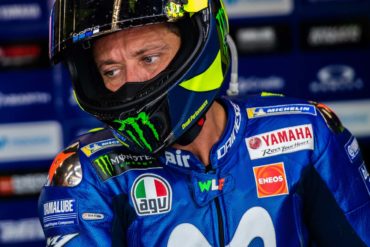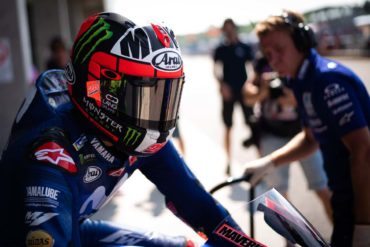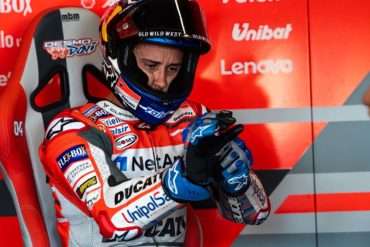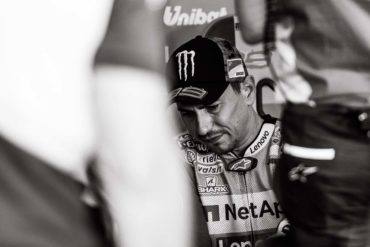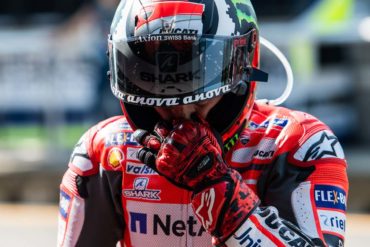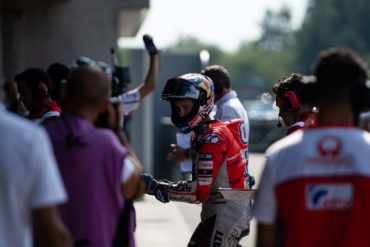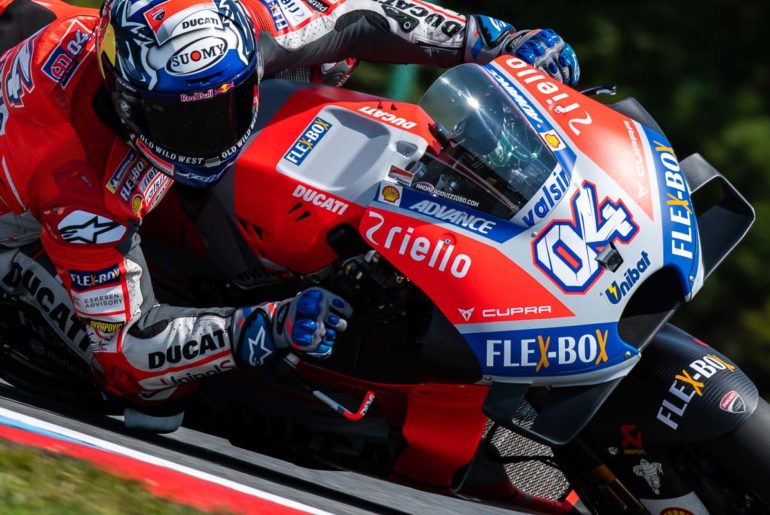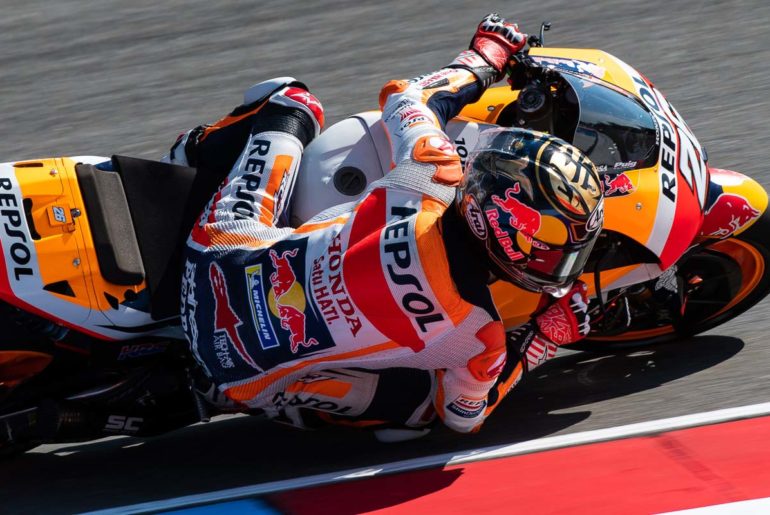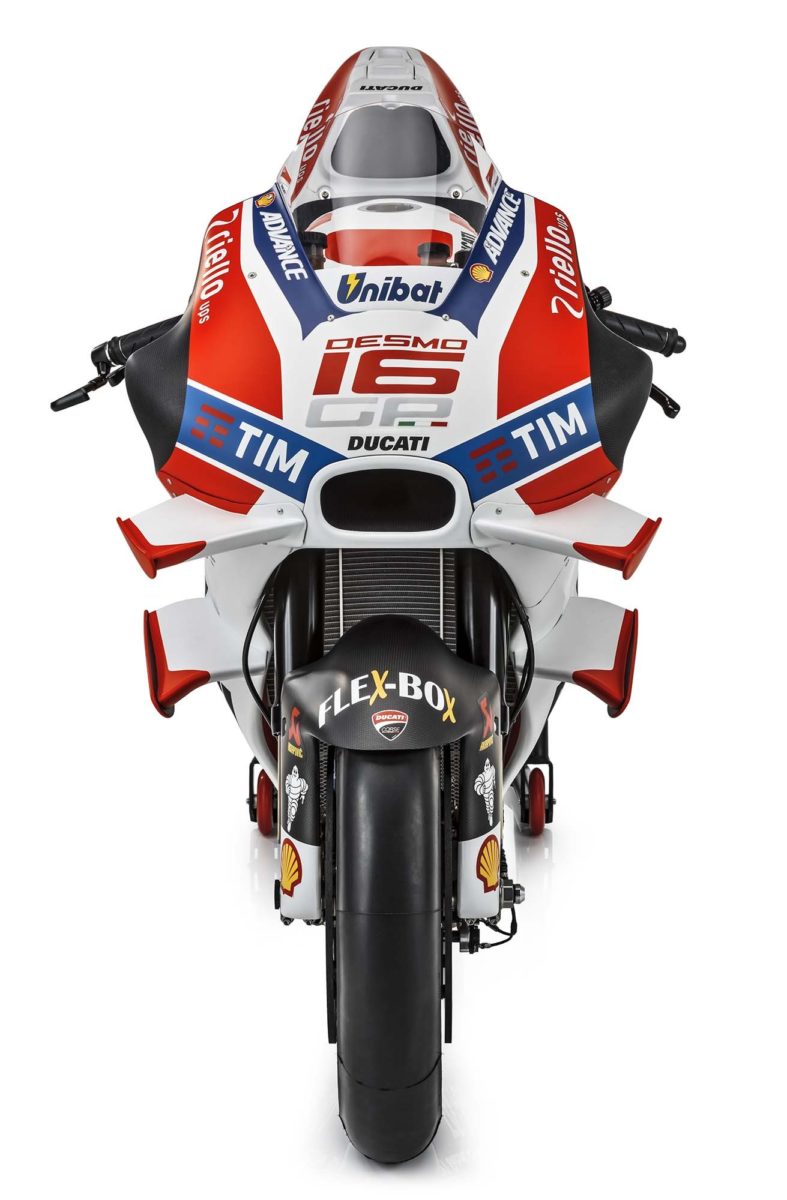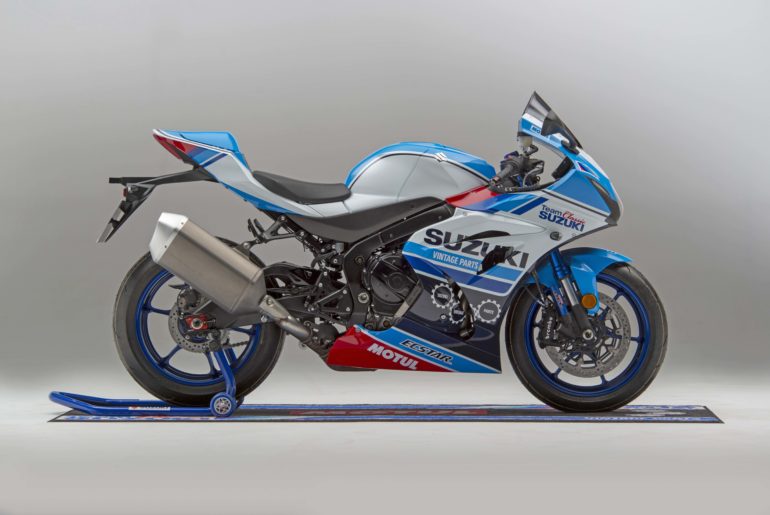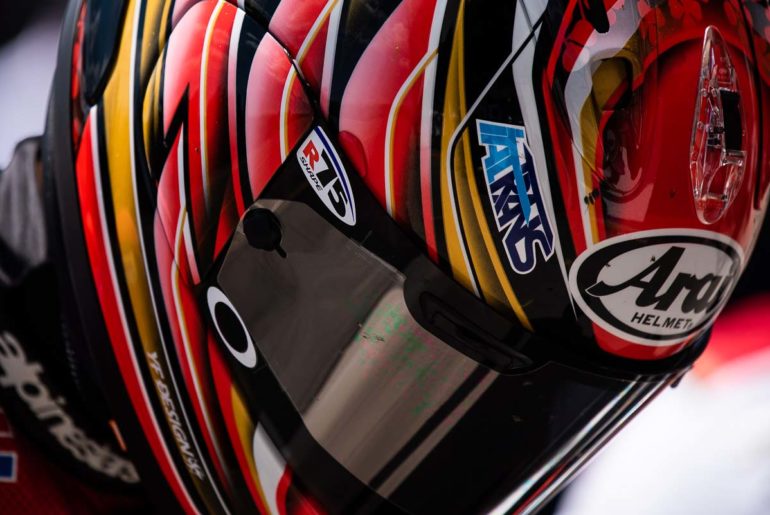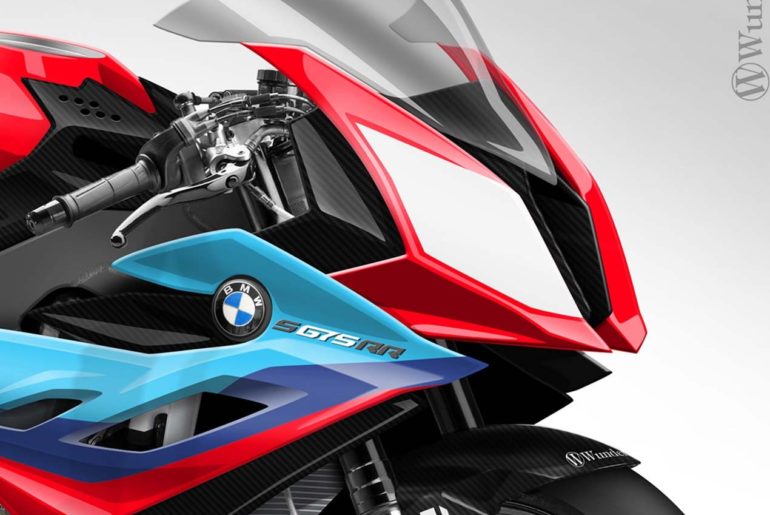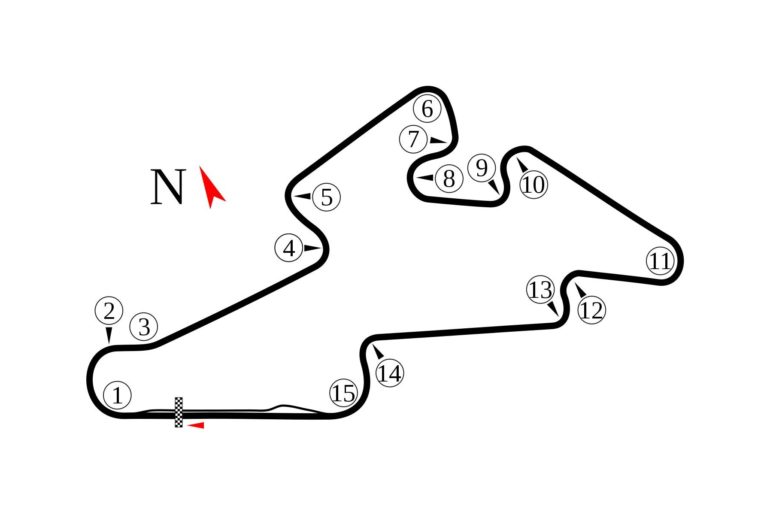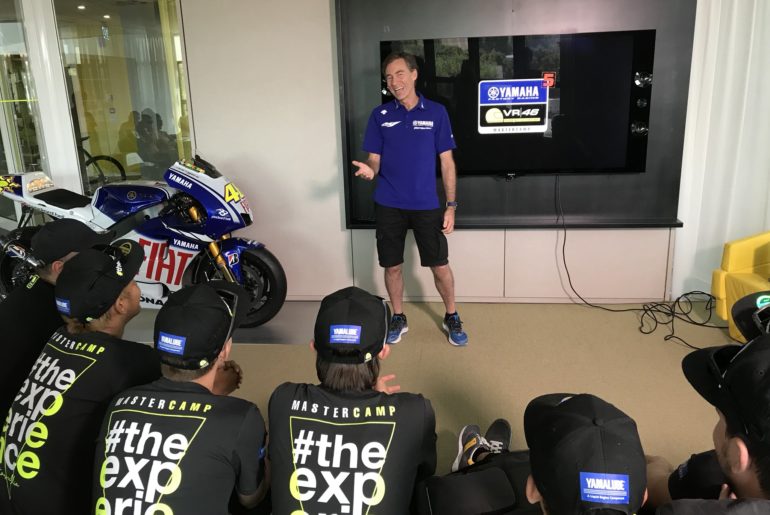Normally, I would start my Saturday round up talking about how pole position was won, whether it was expected or a surprise, and taking glance at race pace among the main contenders for victory on Sunday.
But that would be to ignore the elephant in the room. Sure, Andrea Dovizioso’s pole was impressive, and a little unexpected given just how quick Marc Márquez has been all weekend. But, that’s not the big news from Brno.
The big story in MotoGP is in the final place on the fourth row of the grid, and how he ended up there.
Brno is the place the bomb finally burst between Maverick Viñales and crew chief Ramon Forcada. The tension has been building between the two for months, with rumors that Viñales has wanted to replace Forcada since the beginning of the year.
Viñales has complained that Forcada will not make the radical changes that the young Spaniard requested in search of a solution to the traction problems. Forcada has wanted to stick to the plan, and work through issues methodically, so as not to lose sight of the bigger picture.
For the past few weeks, it has been an open secret that Viñales will be getting a new crew chief in 2019 (Esteban Garcia, currently crew chief for Bradley Smith at KTM).
But Forcada and Viñales have soldiered along, their disagreements only occasionally seeping out into the public, such as at the Le Mans race, where Viñales told the media he had tried to crash in every corner because he felt it was the only way to demonstrate to his team that the bike would go no faster.
Sarcasm Alert
But it all came to a head on Saturday, and it was tire strategy in FP3 that caused Viñales to reveal the depth of the rupture. It was only the smallest of motions which betrayed him.
As Viñales climbed off his bike at the end of FP3, having come up just three hundredths of a second short of making it straight through to Q2, and all the problems which would ensue, the Spaniard clapped as he walked back into the garage.
Three times, by my count, but it was enough. That sparked a backlash by Forcada in an interview with Spanish broadcaster Movistar. Which caused the situation to spiral out of control, ending in a Yamaha press officer telling the assembled media before Maverick Viñales’ media debrief that we could only ask questions related to what happened on track on Saturday.
Entirely predictably, that prohibition had precisely the opposite effect than Yamaha had hoped. On Saturday night, the media has been full of stories on the split between Viñales and Forcada, with Valentino Rossi’s valiant effort to get onto the front row of the grid going largely unnoticed.
The history of such bans being ineffective is long and rich. When the BBC banned 1980s pop band Frankie Goes To Hollywood’s single ‘Relax’, the song went to number one in the charts, and stayed there for weeks.
Why anyone would expect an attempt to restrict knowledge that has already leaked into the public domain to be successful is something of a mystery.
Contrast Saturday’s performance with the way Valentino Rossi handled his split with Jeremy Burgess at Valencia in 2013, in which the two held a joint press conference, and both explained their positions.
That was a perfect example of how to handle such a situation. The Viñales situation on Saturday at Brno was the opposite.
Strategic Error
Where did it all start? With the tire strategy for FP3. Maverick Viñales, it is said, wanted to keep two soft rear tires for the final fifteen minutes of the session, to have a couple of goes at getting straight through to Q2.
Ramon Forcada and the crew, according to well-informed members of the paddock, had based their strategy on Valentino Rossi’s, which was to go out for just one run on soft rear tires.
But when Rossi could not set a quick time on his first soft rear tire, he dived back into the pits and swapped his rear tire for another new soft rear. With that tire, he took seven tenths off his previous best lap, and ended FP3 as fastest. Rossi and his crew had a backup plan.
Viñales did not have such a plan. He went out on a new soft rear, and came up just shy of Andrea Dovizioso, finishing in eleventh place and forced to go through to Q1.
In Q1, he used up all the medium front tires to set his fastest lap, forcing him to use the hard front slick in Q2, with which he was slower than he had been in Q1.
“I think in FP3 we should have used two soft tires, but finally we only used one,” Viñales said, speaking carefully after having spent 20 minutes in Yamaha Managing Director Lin Jarvis’ office, being instructed in what he could say.
“But anyway, it was not in the plan to use two soft tires, so finally, the second tire was not there. And I think that was the mistake, because in Q1 I felt really good with the medium front tire, but as soon as I changed to the hard, because I didn’t have any more new medium front tires, I could not turn.”
“So for me, the biggest issue was the hard front tire, I was not able to make it work.”
The Straw and the Camel’s Back
That was why Maverick Viñales gave a sarcastic little clap when he came back into the pits. That’s not what he told Spanish media, of course, claiming he was “applauding myself for not letting myself do what my head wanted to do.”
After he came back into the pits, he sat in his chair, put his sunglasses on, and stared at the TV screens in the garage. He made no attempt to engage in a debrief with Ramon Forcada, or discuss how the session had gone.
I stood watching for at least a minute, and saw Viñales stare determinedly at the screen, while Forcada scribbled notes and waited.
That must have angered Forcada, for later, when he was interviewed by Spanish broadcaster Movistar, the veteran crew chief expressed himself perhaps more bluntly than he meant to. Yamaha had told him he would not be working with Viñales next year, Forcada said.
But Viñales had said nothing to him about it. What’s more, he was not even sure whether he would be working with Viñales until the end of the year.
“I will try to make a bike to win until my last race with him”, Forcada said. “I’m not sure when this will be, because as things stand I do not know.”
For more extensive quotes on what Forcada said during his TV interview, and what Viñales told the Spanish press, read this story over on Crash.net.
Run Rampant
The picture that emerges from Saturday is of a situation that Yamaha has allowed to run completely out of control. Ramon Forcada is one of the most respected crew chiefs in the paddock, and is widely regarded as one of the best in the business.
He is a passionate and fiery personality, as those who follow his Twitter feed will know. After his first year working with Jorge Lorenzo – also something of a hothead in the garage – Lin Jarvis brought in Wilco Zeelenberg to be a neutral third party, and help to diffuse any problems before they got out of hand.
That worked very well, the trio winning three MotoGP titles together.
Zeelenberg has not had the same role with Viñales, at least not to the eyes of this neutral observer. Viñales and Forcada have dealt with each other more directly, with – to my mind – less involvement from Zeelenberg.
That has not worked out very well. Viñales leads an existence that is almost monastic in its dedication, surrounded by a very small number of people, his entire life focused entirely on winning a MotoGP championship.
The pressure he has placed upon himself leaves him poorly equipped to handle setbacks, bad luck, and mistakes by Yamaha or the team.
It is hard to escape the impression that he has put himself under so much pressure that he cannot see the woods for the trees, pushing for solutions for an immediate problem, rather than focusing on getting things fixed in the long term.
Then again, he is only 23 years old, has not yet won a title, and consequently suffers from a chronic lack of perspective.
Alternative Strategies
The Movistar Yamaha team was dealt a bad hand with the tensions that have grown between Maverick Viñales and Ramon Forcada. But it was a hand that, if played skillfully and with foresight, they could have used to mitigate the situation.
If they had allowed Viñales to speak more freely, made public Viñales’ demands to have Forcada replaced, and publicly discussed who would come in his place, they could perhaps got ahead of the story and led it in a more manageable (and less damaging) direction.
If they had held a press conference with both Viñales and Forcada present, allowing each party to tell their side of the story, the issue would have peaked early and subsided.
If they had spun it, to put it down to an incompatibility of personalities (which, I suspect, is the real truth behind it all), then Forcada and Viñales would both have emerged looking sympathetic, the blame spread around between the two.
Yamaha would have looked like they were in control, trying to effect a reconciliation, but then taking the necessary steps to allow both Forcada and Viñales to step away from each other and succeed.
Instead, they tried to contain it, and ended up watching it spiral out of control. Which is what always happens in situations like these. Better to get out in front of a story and try to spin it, rather than be left trying to catch up, and look powerless.
Fast, New, And Used
There was a qualifying session as well. Andrea Dovizioso took pole with a remarkable lap, and with Jorge Lorenzo heading up the second row, the Ducatis look very strong at Brno, a track they haven’t won at since 2007.
Valentino Rossi took second, with a brilliant lap but concerns over his overall pace. Marc Márquez qualified third, with the opposite problem – outstanding pace, but not able to chase a really quick lap, in part because his team didn’t make (or didn’t bother to make) the right adjustments to the bike to set it up for qualifying.
“I’m happy because the main target was the front row,” Márquez said. “I already know before the qualifying that it will be difficult because with the new tires, also the electronics, the base setup is related to the race setup, and we didn’t make any special modification.”
“Maybe with the soft tire we need something more in a few places, but apart from that we did a great job, especially in FP4. I felt good. This morning also I felt strong on the pace, so this is the most important.”
“We are there. It’s a circuit that normally we suffer a little bit, but even like this we are close to the fastest guy that for me is Dovi.”
The closeness of pace is apparent from the times in FP4, though they require close reading. Márquez appears comfortably fastest, banging out a sequence of laps in the low 1’56s. Dovizioso, meanwhile, did a best time of 1’57.137, and didn’t set a single lap in the 1’56s.
But Márquez did his best times on new tires. Dovizioso’s best time was with a rear tire with 23 laps on it, one more than race distance. The drop of the tires over race distance is expected to be roughly a second.
If Dovizioso can match Márquez’s early speed, then he could well hold the strongest cards at the end of the day.
Softer May Be Better
Early speed is what Valentino Rossi (and Maverick Viñales) is banking on. The Yamaha riders switched to soft tires for FP4, and it looks like this will be the tire they choose to race.
A surprising choice, given the race, but Michelin boss Piero Taramasso explained to me that tire wear is not much of an issue at Brno in the heat, the problem is more that the carcass of the softer tire starts to move much more when it gets hotter, after six or seven laps.
If Rossi can get off the line quickly, he may have a chance. But if he is not leading, he could be in trouble.
The problem Rossi faces is that he did not try the hard rear on Friday, and so cannot be sure how it will behave over the duration of the race.
“For me, it was a mistake to not try the hard yesterday, because maybe with more laps we can understand better. But anyway, today I try this morning, I try this afternoon. The problem is that I’m not very fast.”
“Gamble, usually I’m not very happy about the gamble. Yes, if you go with the soft you are faster at the beginning, but for me difficult arrive at the end. But we have to see, especially about the temperature because if we have less temperature maybe is more easy.”
The weather may yet help Rossi. After two days of scorching sunshine, Sunday is expected to be overcast, though just as hot.
Hot temperatures with cloud cover should drop track temperatures to the more manageable mid-40s °C, rather than the low 50s °C we saw on Friday and Saturday. That would make the soft tire a much more viable option, and made some of the other riders consider running the medium rear.
It might even rain. And if it rains, all bets are off. “You’re going to see a messy race I think,” Cal Crutchlow said, when asked about the possibility of a wet race. With this heat, and a track which dries at very high speed, a race which starts wet could be extremely eventful.
But it would also play to the strengths of Marc Márquez, who is clearly superior in mixed conditions. A flag-to-flag race might be fun, for a change, but it might just end up extremely predictable.
Photo: © 2018 Tony Goldsmith / www.tonygoldsmith.net – All Rights Reserved
This article was originally published on MotoMatters, and is republished here on Asphalt & Rubber with permission by the author.

